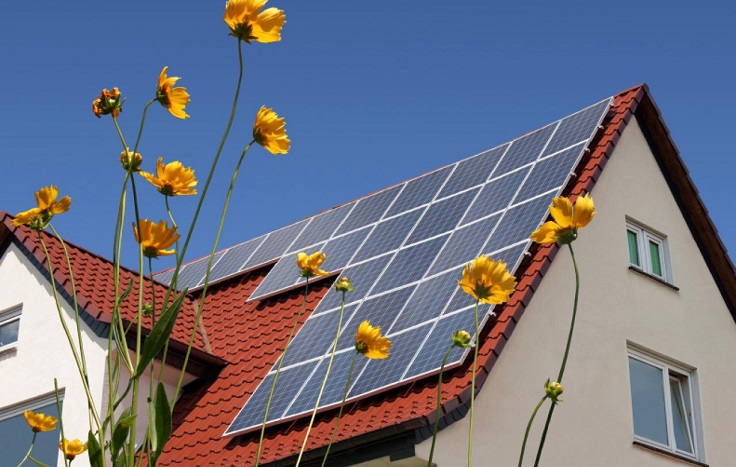While many people associate greening with inconvenient and expensive lifestyle changes, there are actually several cheap and easy adjustments you can make at home to significantly reduce your carbon footprint. To make it as easy as possible to transform your home into a clean energy haven, we’ve rounded up a list of the easiest green changes you can make. So, read on and get the satisfaction that comes from being a benefactor by having a greener home with these great ideas.
Get a greener home by following these ideas
Use a pressure cooker
You’ll be doing both the environment and yourself a favor by investing in a pressure cooker. The kitchen appliance, which speeds up the time it takes to cook a stovetop meal, reportedly cuts cooking time by up to 70 percent, meaning less energy is used in preparing your favorite roasts, pastas and potatoes.
Opt for the toaster oven
If you’re cooking a small meal for just one person, opt for your toaster over your larger electric oven. Toaster ovens consume up to half the energy compared to a conventional electric oven, mainly because a conventional oven requires preheating or opens and closes more frequently throughout the cooking process, allowing heat to escape.
Light up the house with LEDs
According to the US Department of Energy, light-emitting diodes (LEDs) use 75 percent less energy and last 25 times longer than incandescent lighting. And not only do they have the potential to save the environment, but they will also save you a great deal of money on your energy bill.
Compost your waste if you are looking for a greener home
Even the most efficient eaters are going to end up with food scraps to throw out at the end of a meal. But instead of throwing them away, the most ecological thing is to store them in a container to compost. As a University of Washington study found, food waste in landfills is a leading cause of methane, but composting prevents food spoilage and the subsequent release of greenhouse gases.
Putting food waste in the compost bin can really help reduce methane emissions from landfills, so it’s an easy thing to do that can make a big impact.
Don’t throw away the plastic bottles
Putting your plastic water bottle in the recycling bin doesn’t make up for the fact that you’re using a plastic bottle in the first place. Approximately 80 percent of all plastic water bottles in the United States are thrown away with the trash, and only 20 percent of the bottles that are recycled can actually be used for recycling. And as for the bottles that are thrown away, they take more than 1,000 years to biodegrade. Instead, buy a reusable bottle and helping the environment with every sip. You can also recycle the cans by making an edible plant garden.
Embrace Meatless Monday
Skipping the hot dog for just one day a week can have a surprisingly huge impact on the environment. According to the Earth Day Network, eating one less hamburger a week for a year has the same environmental impact as taking your car off the road for 515 km. And if you really want to commit to the ecological cause and become a true vegetarian, you could reduce global greenhouse gas emissions by 63 percent.
Fix a leaky faucet
The slow, excruciating drip of a dripping faucet is enough to drive anyone crazy. Add to that the fact that one drop per second adds up to five gallons of waste water per day, and you have no excuse not to call a plumber ASAP. If you are looking for a greener home, there must absolutely not be a leak in your home.
Shorten your showers
Don’t linger in the shower just because the warm water feels good on your skin. Shortening your shower in just one minute can save up to 570 liters of water per month. And if you keep your shower on for up to five minutes in total, you can save up to 3700 liters per month.
Unplug unused electronics
Do you want to take care of the planet in seconds? Just unplug. The simplest and most obvious way to eliminate energy losses is to unplug the products when they are not in use. If you don’t feel like removing all the lamps and charger from the outlet when you leave the house, use a power strip or multi-contact; it will leave you only one thing to disconnect.
Limit the use of your electronics
How exactly are your electronic components and the environment related? Well, according to study, the data centers that run our electronics consume quite a bit of energy, and most of them are powered by fossil fuels. “For every text message, for every phone call, for every video that you upload or download, there is a data center that makes this happen… [and] they consume a lot of power to serve you..”
Turn off the lights for a greener home
Turning off the lights is a simple act that goes a long way. According to an investigation, “Any reduction we make in our use of electricity, for example if everyone turns off the lights they are not using or turns off the electric heat at the beginning of the year, it could have a bigger impact on the amount of carbon dioxide emitted by power plants. than previously thought, “said study author Dr. Adam Hawkes. And if you’re too lazy to physically turn off the light switch, you can always invest in smart lights that respond to audio commands.
Use a water-saving toilet
It is estimated that there are ecological models that can save up to 49,300 liters of water per year, in addition to reducing water bills.
Don’t use paper towels anymore
You don’t have to give up paper towels entirely, but it’s best to use them sparingly. Scientists compared the seven most common methods for drying hands and found that using paper towels generates 70 percent more carbon emissions than cold-air-powered hand dryers. Of course, you probably don’t have a hand dryer at home, but even using a cotton towel is 48% more environmentally friendly than drying with a paper towel.
Wash your clothes in cold water
Believe it or not, almost 90 percent of the energy a washing machine uses goes into heating the water. By using the cold water setting on your washing machine, you can eliminate up to 1,600 pounds of carbon dioxide emissions per year.
Decorate with indoor plants
Plants will always be part of the green in a home, although caring for house plants requires a lot of responsibility. However, the ends justify the means: Scientists found that potting soil can cleanse indoor air of toxic substances like benzene. Scientist recommended Boston fern and golden pothos for effective air cleaning.
Reuse shopping bags
Whether you opt for paper or plastic is irrelevant as long as you reuse the bags you get from the supermarket. An extensive report determined that paper bags must be reused at least three times to offset their environmental effects compared to those of plastic bags. And reusable cotton bags need to be reused at least 131 times to compensate with a plastic bag due to the environmental impact of their production.
Of course, paper is compostable, while plastic has a huge carbon footprint, so in the end, whatever bag you use is fine, as long as you keep using the same one if you’re looking to go green.
Keep your cat inside your house
Almost everyone’s second favorite household pet has the fate of the environment in its clutches. According to a study published in Nature Communications, cats that are allowed outside (stray dogs included) are responsible for the death of up to 3.7 billion birds and 20.7 billion mammals per year in the United States alone, which it could cause dramatic changes in ecosystems along the way. If you have a cat, make sure it stays inside for the good of all other animals.
Turn off your ice machine
Most people don’t consume dozens of ice cubes a day, yet they leave their ice machines running all day. This little slippage has a big impact on power consumption – the average ice machine increases power consumption by up to 20 percent when running 24/7. Turn off your ice machine when you’re not using it, or better yet, buy an ice tray and create carbon-free cubes.
Grow and produce a garden
If you want to take your green eating habits one step further, you can use your backyard space to start growing your own produce. By growing your own food, you eliminate the emissions that come from transporting goods to your local markets and massive grocery stores.
Stop buying plastic plates
When you don’t feel like washing dishes, plastic silverware and plates are like an easy out, but these single-use products are costly for both your bank account and the environment. Single-use items make up a large proportion of the plastic trash that leaks into the ocean.
Lower microwave use
Microwave meals are cheap, easy, and sometimes even delicious. But a study is making us question our confidence in the kitchen appliance: Apparently, the use of microwaves in the European Union emits as much carbon dioxide per year as 6.8 million cars. Rather than throwing out your microwave, the study authors suggest adjusting cooking times based on the type of food being prepared and using your microwave only if you have no other option.








